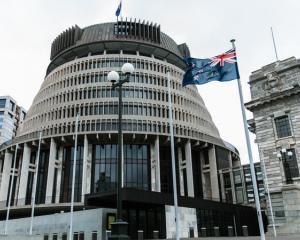They were aware of the flood of pests drowning our precious native fauna and degrading natural habitats, and they felt impelled to respond. It was 10 years ago that a group, inspired by Ralph Allen, determined to create the South Island's first - and still its only - large-scale fenced sanctuary. And that is what they, and their successors, have done. In effect, they built a protective ark and then began shepherding in species one-by-one.
It all took time, but in 2009 the ecosanctuary was open to the public. It, also, took lots of money, widespread support, dedication and uncountable thousands of hours of voluntary labour.
First, once the plan was in place, came the $2.2 million, 8.7km pest-proof fence around 307ha. Then came pest eradication. And then the reintroduction of endangered species.
Meanwhile, another $2.2 million was spent on the visitor and ODT education centre - a building of style, distinction and purpose that won the 2010 New Zealand Institute of Architects' national sustainable architecture award.
In the early days, despite the presence of notable native species even before the predator fence, the forest and land was relatively quiet. Steadily, in the absence of possums, rats, stoats, weasels, ferrets, goats, hedgehogs, rats, mice and cats, the place has fluttered to much more abundant life.
Highlights have included the reintroduction of the South Island kaka, tuatara, takahe, kiwi, the jewelled gecko, the South Island saddleback and the South Island robin.
Other species have blossomed and the fern bird has introduced itself over the fence to the predator-free paradise. Today, as it happens, a female takahe is due to arrive. Weeds have had to be removed, as well, and native plants of various types planted.
The sanctuary plays various roles; educating many hundreds of school children and adults, acting - particularly though rare high-profile birds - as an advocate for conservation, and providing a safe home where creatures can thrive. It showcases what this land could be like in the absence of the foreign menaces.
It bring jobs - seven full-time equivalents - to the city and promotes Dunedin's wildlife strengths for visitors.
While being located a distance from the main highway is disadvantageous, and the site behind Mt Cargill and overlooking Blueskin Bay can take some finding, the ecosanctuary is, in fact, close to the city and it has become a popular place for locals to take their visitors.
Keeping the ark afloat remains a challenge because expenses run well ahead of visitor fees. It remains, therefore, heavily dependent on grants and sponsorship.
Nevertheless, its trust status and community participation (about 800 voluntary hours a month and 1500 members) means it sustains itself without large ratepayer backing.
This means, too, the community can feel a sense of ownership, which can only be enhanced if the trust is able to boost membership towards its goal of 3000.
Although it is unlikely the pest scourge will ever abate from mainland New Zealand and the gates of the ark will ever be able to be flung open, the influence of the sanctuary is expanding in direct, as well as less tangible, ways.
Kaka, which were in 2008 the first birds reintroduced, have bred and spread and number about 32, with eight fledglings from the past summer.
They have now been spotted in the villages to the north of Orokonui, and it cannot be long before they fly the corridors to Dunedin city itself.
How appropriate it was the kaka came from the aviary at the Dunedin Botanic Garden. For it was at the gardens that Dr Allen and his fellow enthusiasts first met 10 years ago to launch their vision. What was once an Orokonui farm and water reservoir has been, and is being, transformed into a forest ecosystem not too unlike what existed before humans arrived.
Tucked behind the hill, it can be easily overlooked and, as the novelty wears off, be taken for granted. As a Dunedin treasure, that should not be allowed to happen.











